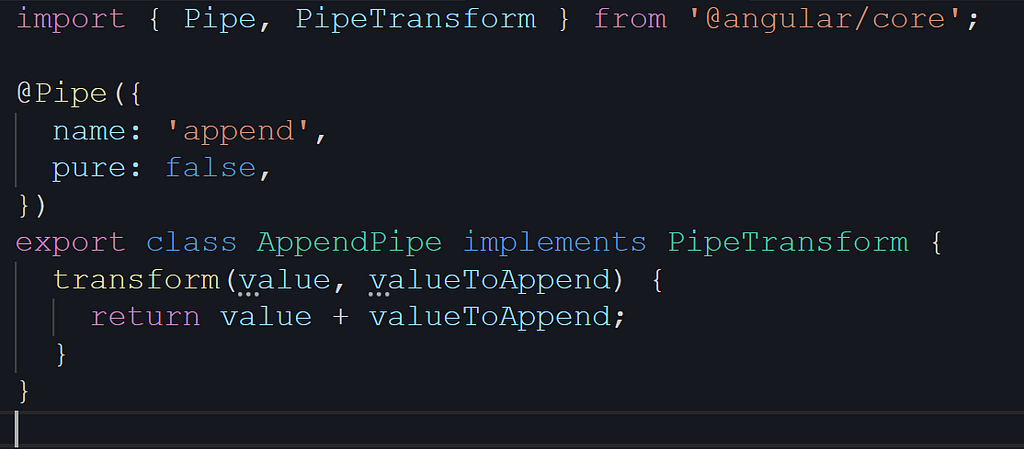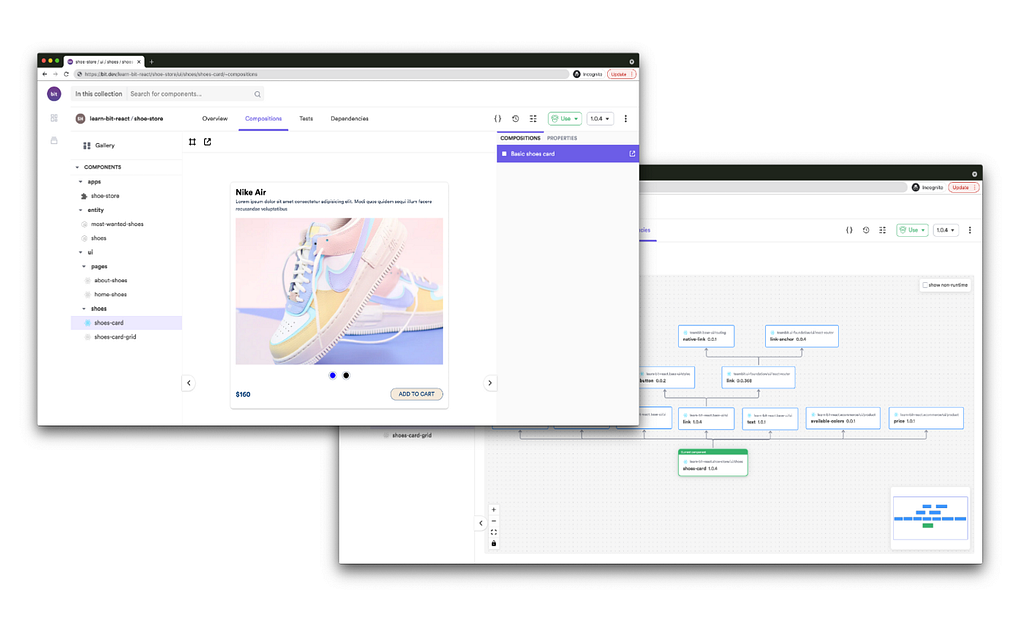This content originally appeared on Bits and Pieces - Medium and was authored by Makesh Kumar

What are Pipes in Angular?
Pipes are simply a function that we can directly apply on any expression/value in a template to transform it into some other value.
The value on which we are applying the pipe is the input for our pipe function. The value returned from that function will be replaced in place original value.
Built-in pipes in Angular
Angular comes with many built-in pipes. Some of them include:
- uppercase (to convert string in upper case);
- lowercase (to convert string in upper case);
- date (to format the date into different types);
- json ( to convert a value or object into JSON formatted string).
Examples of pipes in use:
<p>{{ 'Makesh' | uppercase }}</p><p>{{ 'Kumar' | lowercase }}</p><p>{{ { name: 'makesh' } | json }}</p>Passing arguments to pipes
Pipes like date, currency will take arguments for pipe function, to pass argument follow the pipe name (currency) with a colon (:) and the parameter value (‘EUR’).
For example:
<p>{{ 100 | currency: 'INR' }}</p>
<p>{{ currentDate | date: 'dd/MM/yyyy' }}</p>Chaining multiple pipes
To chain multiple pipes together, we just have to use a pipe operator (|) between different pipe names, see the below code for example
<p>{{ currentDate | date | uppercase}}</p>Types of pipes
Pipes can be classified into:
- Pure Pipes
- Impure Pipes
1. Pure Pipes
A pure pipe is only called when Angular detects a change in the value or the parameters passed to a pipe.
2. Impure Pipes
An impure pipe is called for every change detection cycle no matter whether the value or parameter(s) changes.
Creating our own custom pipes
To create our own custom pipe, follow the below steps:
- Create a class and apply @ Pipe decorator (without the space between @ and Pipe) to it and pass an object to the decorator which contains two properties:
- name (name of the pipe)
- pure (the optional property which determines the type of pipe, by default it is true, we can provide value as false to make pipe impure). - Register the class in the respective module declarations array.
- Implement the PipeTransform interface in your custom pipe class to perform the transformation.
- PipeTransform interface has a function called transform which we have to implement in our class, transform is the function that is going to have our logic to transform values.
- the first parameter of the transform function holds the value on which the is pipe is applied and the remaining parameters are the values which is passed while invoking the pipe (using : operator).
after performing transformation as per our logic we have to return the transformed value. - Now we can apply the pipe in our template by using the name of our pipe with the pipe (|) operator

See a live example in stackblitz
Thank you for reading. I hope you have found this useful. Happy learning!
Build modular, reusable React components with Bit.
Monorepos are a great way to speed up and scale app development, with independent deployments, decoupled codebases, and autonomous teams.
Bit offers a great developer experience for building component-driven monorepos. Build components, collaborate, and compose applications that scale. Our GitHub has over 14.5k stars!

Learn more
- Building a React Component Library — The Right Way
- 7 Tools for Faster Frontend Development in 2022
- Microservices are Dead — Long Live Miniservices
Getting Started with Pipes in Angular was originally published in Bits and Pieces on Medium, where people are continuing the conversation by highlighting and responding to this story.
This content originally appeared on Bits and Pieces - Medium and was authored by Makesh Kumar
Makesh Kumar | Sciencx (2022-01-13T18:00:29+00:00) Getting Started with Pipes in Angular. Retrieved from https://www.scien.cx/2022/01/13/getting-started-with-pipes-in-angular/
Please log in to upload a file.
There are no updates yet.
Click the Upload button above to add an update.
